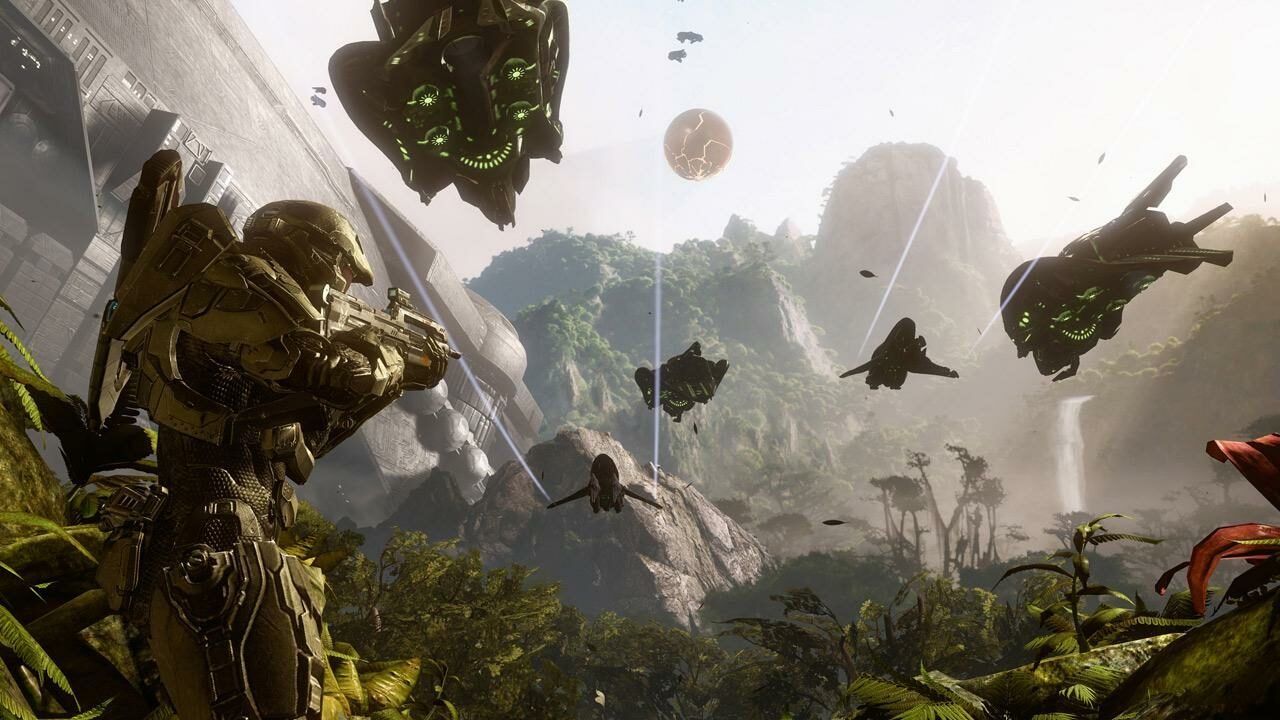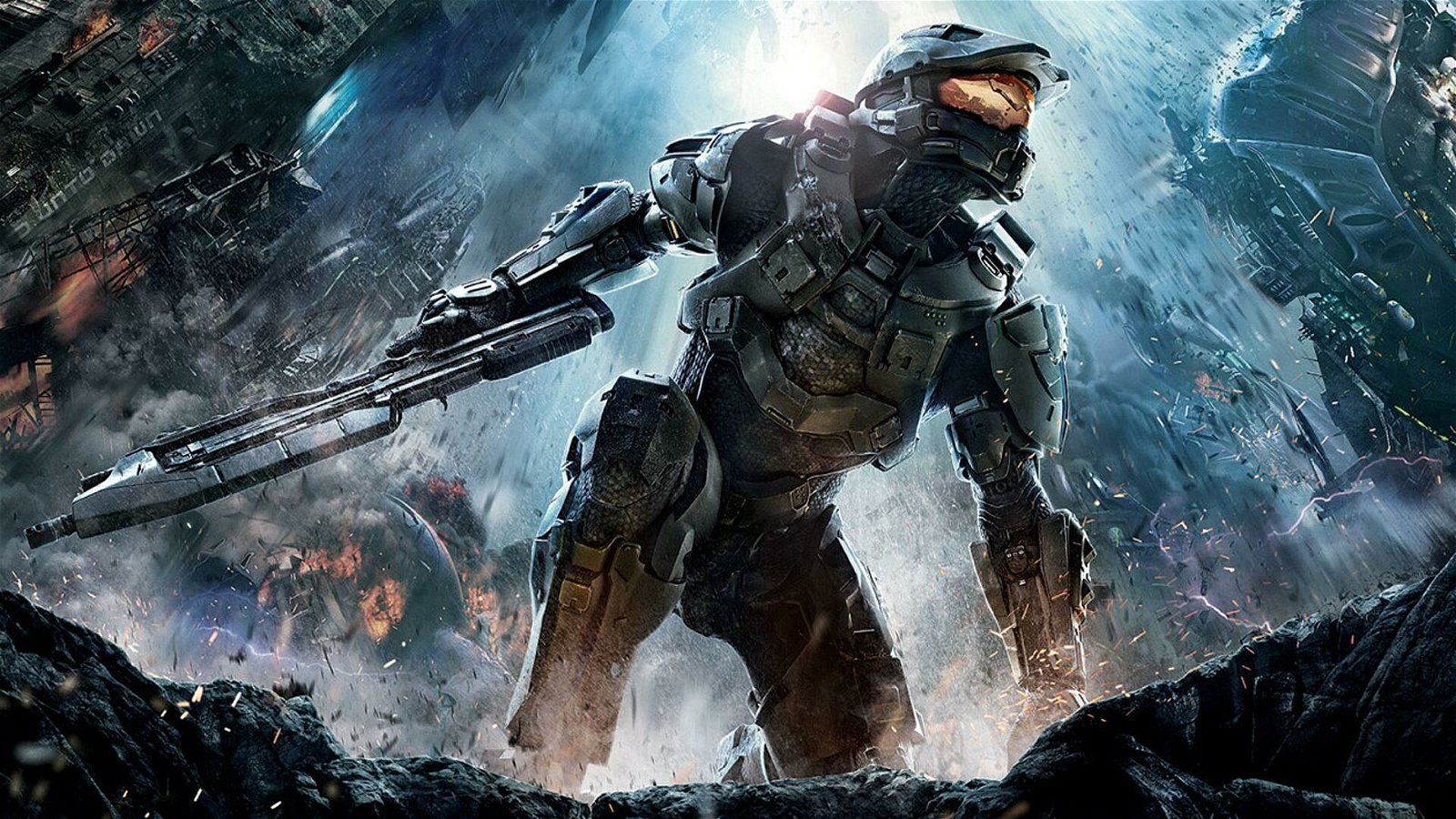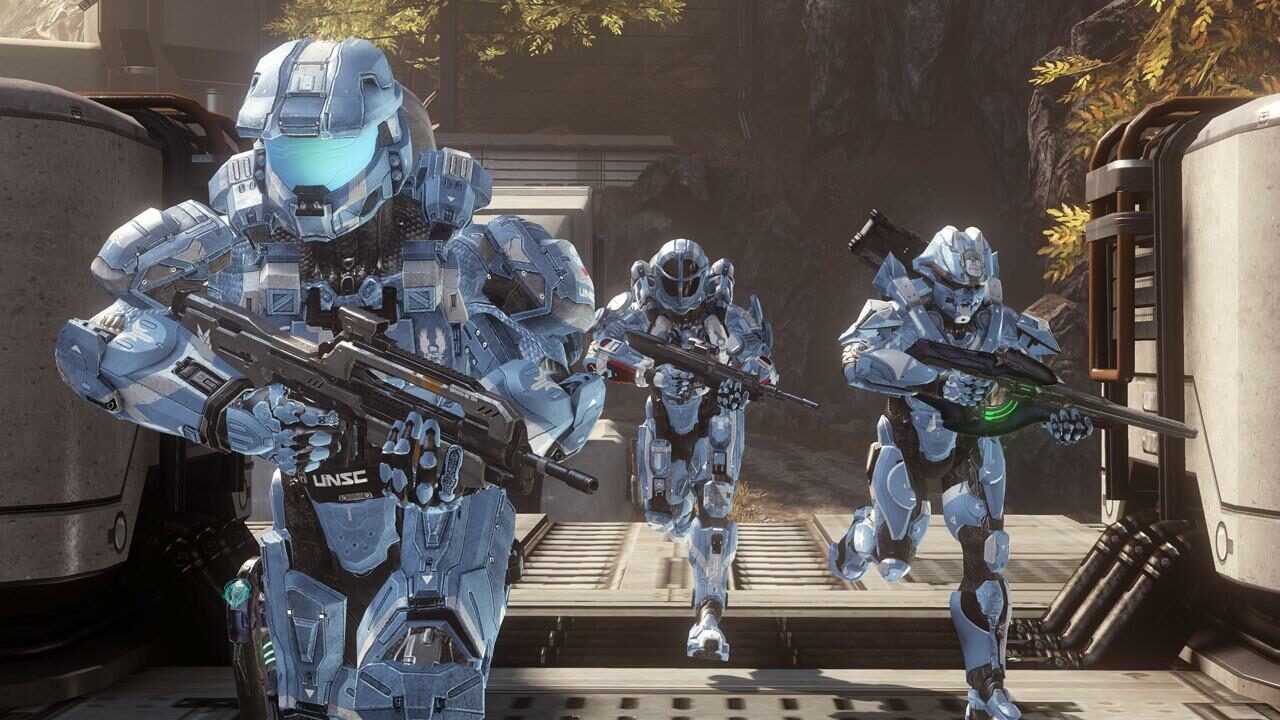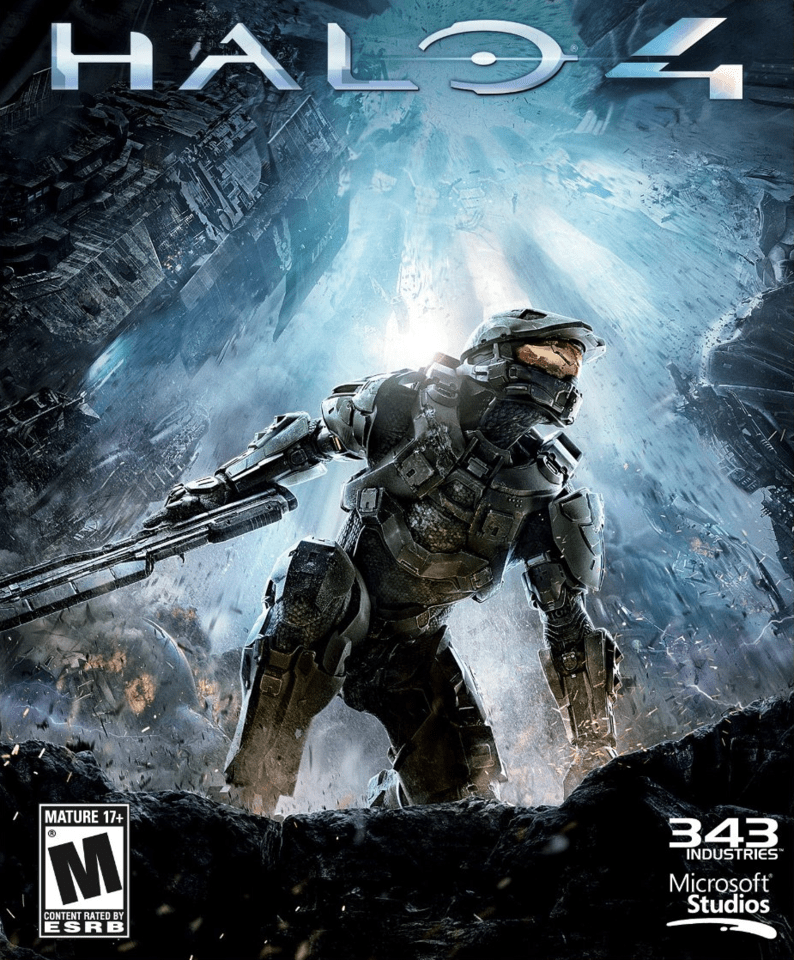Hail To The Chief
It took five years and the gargantuan effort of changing stewards from one studio to another, but the title that put the Xbox where it is today has finally returned. Halo 4 has touched down and it is a proper, numbered sequel in the series that once again features Master Chief, the Space Marine by which all others are judged. It’s a big responsibility for newcomer 343 Industries, a studio assembled by Microsoft itself for no other reason than to carry on the Halo legacy now that series creator Bungie has left the IP for new, presumably multiplatform pastures with Activision. With so many people across the world aching for a new Halo experience, what’s the one thing 343 Industry could do to satisfy them? Why, make an old, provenHalo experience and do it well. And that’s exactly what’s happened.
Virtual Relationship Problems
After the almost Arthurian ending of Halo 3 where Master Chief was put into stasis with a request to wake him if there was ever need… there’s a need. A new villain arises to threaten humanity and this time it’s the oft mentioned Forerunners to whom the construction of the Halo galaxy killing array system is attributed to. On top of this, the continuing vaguely disturbing undercurrent of Master Chief’s romantic longings for his artificial intelligence Cortana gets more air time as she comes down with an AI condition known as “Rampancy.” This is a deterioration of AI cognitive processes after about seven years of service that results in the AI “thinking itself to death.” Cortana, after this latest bout of babysitting a cryogenically suspended Master Chief for a few years, has put in eight. So with that double whammy of urgent priorities Master Chief is back on the case, piloting combat craft, wandering exotic alien locales and shooting anything without a USNC IFF signal. All’s right with the world, as far as Halo fans are concerned. The only real criticism with the progression of the plot is that, like Assassin’s Creed, 343 Studios sometimes errs on the side of presumption, assuming that people playing the game have kept up with dense lore of Halo that’s cropped up in comics, anime and novels. If you’re not one of those people there will be occasional moments of bafflement as these transmedia plot elements are invoked. For the dedicatedHalo fan, this is a joyous wink of appreciation. For everyone else, it means moments ofentirely too convenient plot device/developments that have little traction.

Moving on to the presentation, there’s good news for graphics whores; this is quite possibly the greatest looking Xbox 360 game ever made, a fairly safe statement to make considering next year will be the console’s last. The frame rate is steady as a rock, there’s little in the way of glitches or collision detection issues, and there’s a noticeable jump in polygon counts and animation from even Halo: Reach. Microsoft has invested some serious money in facial capture technology so even Cortana gets in some startlingly nuanced expressions during the vaguely disturbing scenes of emotional endearment between herself and Master Chief. Master Chief probably also has some Oscar worthy arches of the motion captured brow, and pursing of lips during these tender moments, but we’ll never know. The art direction has also gotten a nice injection of new form and color thanks to the new enemy. Halo has always been good at bypassing the monotone, brown/grey mess that plagues almost every other FPS out there, and 343 Industries keep the reputation alive and well. The more angular, hard lines of the Forerunner enemies and environments give certain sequences of the game almost the feel of a futuristic Japanese game such as Zone of the Enders. But there’s still room for the lush, natural environments that players have come to expect as well, and of course, the Covenant look pretty much the way you remember them, with slight tweaks to their armor.
The sound is also what you’d expect. The iconic “shield empty” beep still trills frantically in the background and the gun fire does a decent job of taking advantage of surround speakers. The big concern here is probably the music, since the regular series composer Marty O’Donnell is now as absent as Bungie itself. Newcomer Neil Davidge—of Massive Attack fame—steps in, and while his compositions aren’t familiar, they feel fitting. Players pining for nostalgic moments of Gregorian chanting are in for disappointment, but there’s a weight and brassiness to the score that evokes everything from Star Wars at times to Avatar. It sounds like an extremely polished science fiction film and it fits the new feel and direction 343 Industries is taking Halo in. It is, like so many other things about Halo 4, safe.

Comfort Food In A Call Of Duty Era
“Safe” is an adjective that can be applied to just about every aspect of Halo 4. 343 Industries went back, put every Halo game under a Star Trek tricorder, and analyzed with almost mathematical efficiency what moments and mechanics from past games players responded to positively. Then they re-skinned those moments in the shiny new graphics engine with a new plot and let players live through them again. Signature free-form combat? Check. Hijack a Ghost and veer around a big open area taking pot shots at Elites? Check. Lonely meandering through vast, ancient, alien corridors? Check. Brief feelings of military omnipotence behind the wheel of a near unstoppable Scorpion tank? Check. Witty, world weary banter between soldiers? Check. Exciting vehicle section that invokes memories of the Star Wars final trench run on the Death Star? Check.Creepy pseudo-romance between a stone cold killer and his hot, blue, naked artificial intelligence, with the curves of a porn-star? Check, check.
Keep in mind, none of this is done badly, which is the important part. If you’re going to take iconic moments from a series that has a special place in the hearts of gamers, don’t screw it up. 343 Industries didn’t. This still feels like Halo, which is a nice change of pace from the relentless linear, fixed action set pieces that Call of Duty has plagued the industry with in Master Chief’s absence.But this isn’t anything particularly new, just a rehash done with polish and great technical proficiency. Halo turned the world upside down with a plethora of new mechanics console gamers had never seen before. This merely reminds players—in a positive way—of that warm fuzzy feeling they had back in 2002. It’s like finding out that childhood restaurant you hadn’t eaten at years was not only still in business, but had just opened up a new franchise around the corner. And when you order your favorite burger, it’s absolutely nothing new, but there’s still great comfort and pleasure taken from having that familiar taste in your mouth. That, in a nutshell, is the Halo 4 experience.
On the flip side of course, that means there’s nothing to surprise you. No moments of new discovery, no feeling that some bold new feature you’re experiencing for the first time is going to be a new standard for gaming that others will imitate. There’s no sense of risk or evolution to Halo 4, only accomplished refinement. A few new weapons pop up thanks to the new alien race, but these feel like assault rifles, carbines and shotguns, just now with free floating components and new textures. And it still feels good. The combat, even without Bungie’s hand, has that promise of experimentation that only Dishonored has managed to capture recently. 343 Industries understands how to give players a wide set of tools and a large enough environment that they can experiment in to fight enemies in different ways, employ different strategies, and, of course, play with friends in the included co-op mode that supports both local, LAN and online. Again, none of this is new, but it’s a welcome return to a different way to play an FPS.

That’s not to say that Halo has totally escaped the black hole of FPS design influences that is Call of Duty. When you get to the multiplayer component, a decidedly COD-ish vibe begins to creep in. Halo:Reach already showed that Bungie was willing to dip from COD’s “RPG-lite” well, and 343 Industries does the same for Halo 4. There’sthe now almost required mechanic of XP gained at the end of combat which can then be used to upgrade load outs, special abilities and character customization options. This, married with the already strong concepts from previous games such as The Forge, and the Theater, the usual competitive modes—all gathered in the section known as War Games—are all available so players will once again find themselves in familiar territory. Familiar bunny hopping, racist, homophobic, sexist territory filled with screaming kids that shouldn’t be playing an M Rated game but are anyway. Thank God for party chat and the “Mute” function.
One interesting new addition for multiplayer is a new co-op mode called “Spartan Ops.” This is probably the most valuable change to the Halo formula, adding a comprehensive co-op campaign that will unfold over time with new missions. “Episode 1” comes complete with its own cinematics—up to the high quality established by the pre-rendered sequences in the main game—and five missions to play through. The missions finally outgrow the rampant Horde Mode imitation from Gears of War that constitutes so many other co-op modes in online FPS gaming. Missions take smart advantage of Halo’s strengths, allowing full use of traditional Halo vehicles in large, open warfare, or simply crawling through the passages of alien installations, clearing out enemies. It will be interesting to see how Spartan Ops develops over time, with subsequent episodes. It’s the one truly innovative highlight of the entire Halo 4 package. It feels new, smartly designed, and does seem like it should be a feature that other games would do well to imitate for their multiplayer modes.
At the end of it all, the thing that matters is that this is Halo that didn’t get messed up. It may not take a lot of chances, but when it still retains the feel of its now iconic style of gameplay, that’s more than enough to keep the fans happy. This is one of those critic-proof games that doesn’t even require a review; no matter what anyone says, almost everyone with an Xbox 360 is going to buy it. But at least when they do, they’re getting a polished—if overly familiar—experience that doesn’t embarrass its legacy despite its new stewards. And it has a new and interesting co-op mode to boot. I’d say “Go out and buy this game,” but you probably already have.






